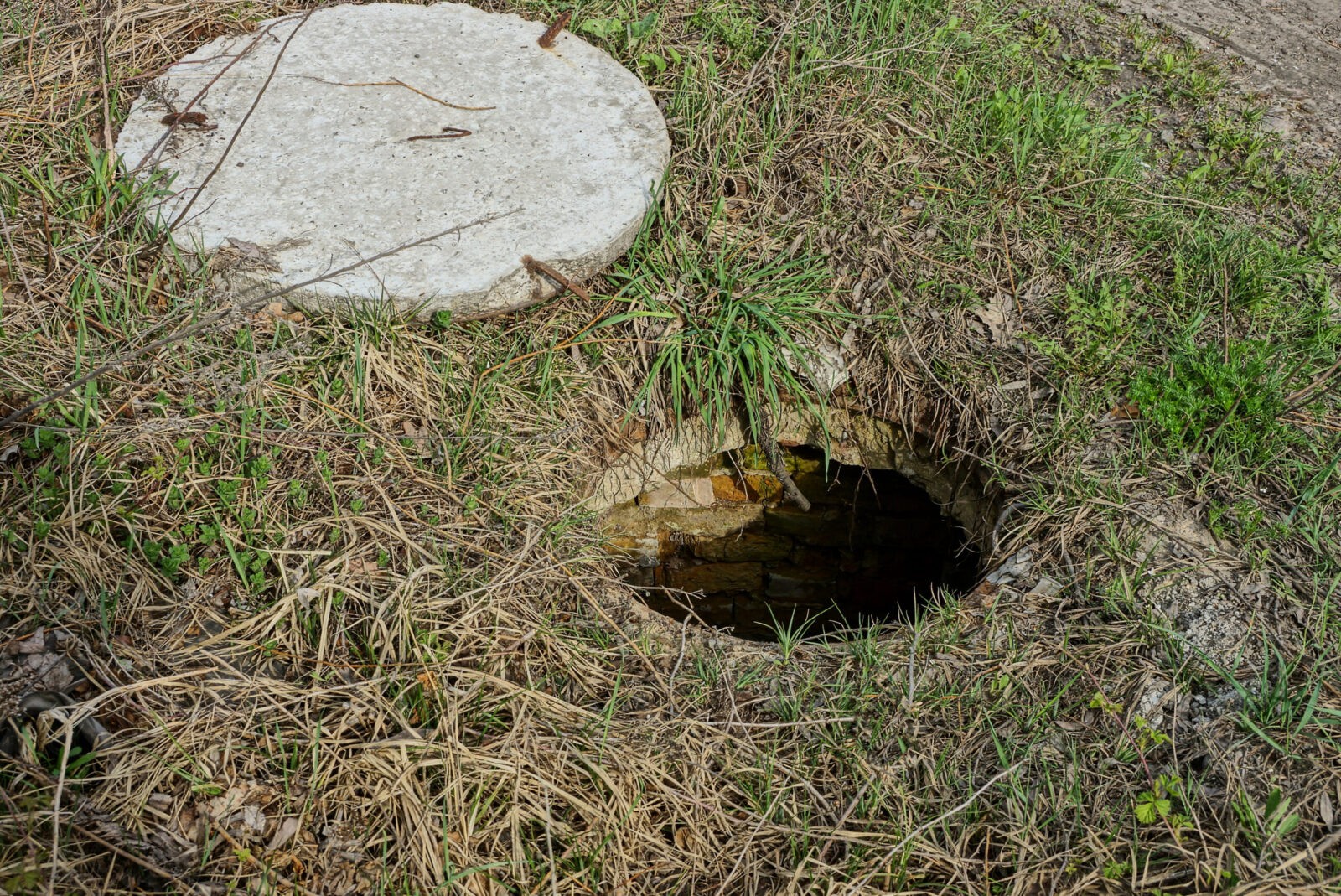According to the U.S. Geological Survey, more than 43 million people – or 15 million homes – rely upon private household wells for drinking water, but is well water safe to drink?
“There can be serious water quality problems with well water,” says Eric Yeggy, Technical Affairs Director for the Water Quality Association. “I wouldn’t rely on chance when it’s relatively easy to find out if your well water is safe to drink.”
Eric has spent more than 20 years in the environmental testing industry analyzing drinking water, ground water, and soil, and recently stopped by the vipHome Podcast with well water safety tips!
Common contaminants of well water
Well water is essentially water pulled up from the ground (or groundwater) that is untreated. Common contaminants in well water include arsenic and nitrate as well as radiological contaminants like radium, barium, strontium. Groundwater can also be impacted by industrial activity.
“Even well-intentioned human activities sometimes have unintended consequences,” says Eric.
Recently, PFAS contamination has been in the news (and Eric explained PFAS chemicals to us on an earlier episode of the vipHome Podcast)! PFAS are per- and poly-fluorinated alkyl substances that are commonly used in firefighting foams, and one of the ways they are released into the environment is through events that were staged to train firefighters.
“Once they are released in the environment, they’re very persistent and can find their way into aquifers,” says Eric.
Other contaminants can enter aquifers, such as pesticides and herbicides, from agricultural activities. Nitrate or nitrate from fertilizers or from livestock manure can also reach dangerous levels in aquifers, especially for small infants. Fecal matter, too, can threaten the safety of water well.
“The presence of fecal coliform or E. coli is an indication that fecal matter is somehow making it into your well water,” says Eric. “You might be exposed to pathogenic bacteria, viruses, or even cysts like cryptosporidium.”
Warning signs of a contaminated or polluted well
Trust your senses. Discoloration, bad taste, or odor are all indications that something might be wrong with your private well water.
“It’s worthwhile to do some testing if you are noticing any of that,” says Eric.
White scale buildup (or mineral buildup) on your faucets and shower doors indicates hard water, which is not dangerous to humans but can damage your appliances.

Iron can cause a reddish staining, and manganese can cause a black staining. Manganese is not dangerous at lower levels but can cause serious health effects at higher levels, including problems with memory, attention, and motor skills. Children can also develop learning and behavior problems from manganese exposure.
Unfortunately, “…many things that could potentially impact your health or the health of your family are completely tasteless and odorless, like arsenic,” says Eric. “It’s a naturally occurring element that is common in the geology and is often picked up by the groundwater.”
How to test your well water
“If you are a do-it-yourselfer, the first thing I would recommend is to contact your state or your county public health department,” says Eric.
Oftentimes, county public health departments have programs that will help with well water testing and recommend what to test for based on the history of the other groundwater testing in your area.
“There’s also private laboratories that do this kind of testing,” says Eric. “The Water Quality Association can help you find certified drinking water laboratories and water treatment specialists in your state.”
Testing is essential for water well safety. Learn more tap water testing tips from Eric and the WQA now!
Frequency of well water inspection and testing

The Environmental Protection Agency (EPA) recommends testing your well water once a year. If you’ve found issues with nitrates, pesticides, and fecal coliform in the past from surface runoff, then you may want to retest frequently to make sure you’ve fixed those problems.
“You should also retest after flooding,” says Eric. “If your well head has been underwater, there’s a good chance that your well may have been contaminated.”
How to treat a polluted or contaminated well
- Disinfect the well to remove germs or microbes.
- Add filters or other on-site treatment processes.
- Identify a new water source.
- Or even dig a new deeper well.
Generally, well specialists use a chemical to disinfect the well, followed by flushing to remove that chemical from the house. After your well is disinfected, there are certified products you can use to remove bacteria, virus, and cyst. You can also install a barrier to prevent these contaminants from returning.
Inside your house, you can install a reverse osmosis system under your kitchen sink to remove arsenic and nitrate from your tap water.
“It will come with a separate faucet that you only use for drinking water or cooking water,” says Eric. “You can also get whole-house systems for these contaminants that will treat all the water coming into your home.”
Certain radiological contaminants are easy to remove from your water supply with a water softener.

“You will also get the benefits of softened water, including protection of your appliances, cleaner clothes, less energy usage, preventing the buildup of hard water scale, etc.” says Eric.
Of course, there are also PFAS, pesticides, herbicides, and volatile organic solvents or other industrial chemicals that can show up from leaking underground storage tanks.
“First, find what’s in your water first by testing, and then you can shop around to look for products that are certified to remove those contaminants,” recommends Eric.
Well water is safe to drink after disinfection…right?
After the professional disinfects your well, they need to flush that chemical out of the well and through your plumbing.
“Keep in mind that regardless of who you have complete that disinfection step, make sure that they are using a chemical that has been certified to NSF/ANSI/CAN 60. It’s commonly referred to as Standard 60.”
This standard helps to ensure the safety of chemicals used with drinking water.
“You don’t want somebody dumping household bleach or pool and spa chemicals down your well,” says Eric. “Those chemicals contain other things besides just chlorine.”
Laundry bleach has additives that help with scent, odor, and cleaning, which occur naturally from the manufacturing process. These chemicals aren’t dangerous when they are used as intended.
“Typically, these chemicals have a strong chlorine odor,” says Eric, “so you can tell when they’ve flushed it out. The odor will go away.”
Important well water maintenance tips
Resources from the EPA, the Water Systems Council, and privatewellclass.org provide maintenance tips to help you tackle well water safety.
“If I had a private well, the first thing I would do is contact my county or state public health department to see what programs they offer for well owners,” says Eric.
Many of these agencies have field staff who are qualified to inspect your well and give you personalized recommendations.

“Those personalized recommendations are going to be much more valuable than just general tips and guidelines,” says Eric.
To prevent well water contamination, the EPA recommends homeowners take the following general steps:
- Keep hazardous chemicals out of septic systems and away from your well.
- Pump and inspect septic systems as recommended by your local health department.
- Install a sanitary seal and slope the area around the well to drain surface runoff.
- Hire a certified well driller for any new well construction or modification.
The Water Systems Council also recommends that homeowners take the following steps to inspect their well:
- Inspect the wellhead several times of year to make sure it’s in good condition with no cracks or other issues that can lead to contamination.
- Have their well pump, storage tank, pipes and valves, and water flow inspected by a licensed well contractor every five years.
- Have the well inspected immediately if you have no record of the last well inspection.
A well’s serviceable life is usually more than 20 years. Always make sure to use a licensed well contractor to install a new system and close the old well properly and safely.
Get more water safety tips in Water Treatment for Dummies, a digital free booklet available on the WQA website.
 Keep your home safe and secure
Keep your home safe and secure
Homeownership can be hard, but it doesn’t have to be. The vipHome.app can help. In less than four minutes, enjoy a new way to manage your home. Simply download the app, register your home, and enjoy a simplified homeownership experience.






